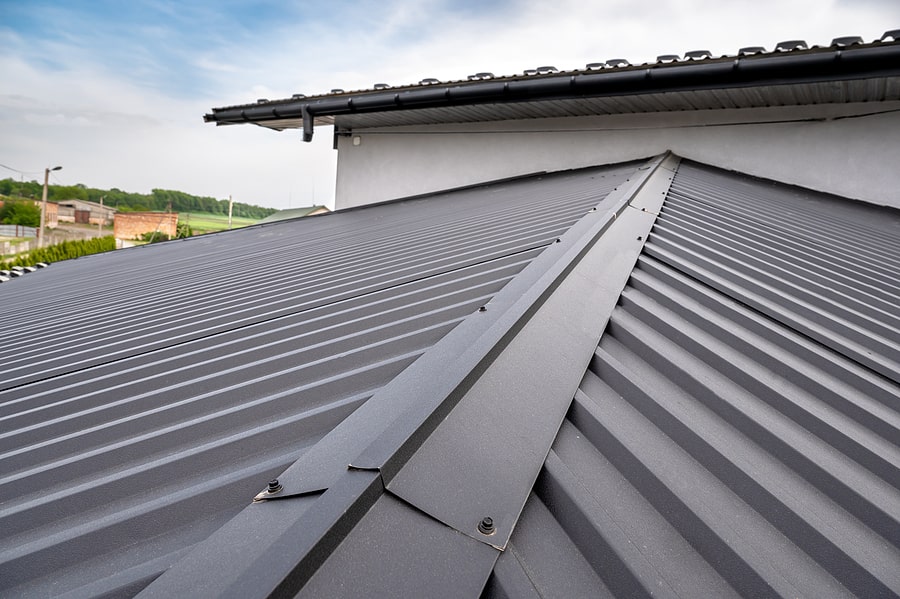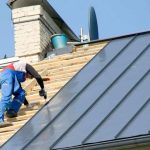Metal roofing materials are being used extensively due to their durability, ease of installation, and other favorable characteristics. If the metal roofing materials are correctly selected, installed, and properly maintained, they will have an extended life.
A huge variety of metal roofing materials with different characteristics of weight, color, durability, and cost is currently on the market. Roofing materials are selected during the design of structures. Mostly, the selection of roofing materials is influenced by the geographic and climate conditions of the area. All the metal roofing materials should be considered from the types of residential metal roofing that are available.
A roof in a locality that experiences extensive snow would require a particular slope angle for the discarding of snow. If the snow is not removed, the structure of the roof may be damaged due to pitting corrosion. Thus, the roofing materials selected accordingly will facilitate snow removal. Similarly, if the roofing materials are affixed simply with a few nails, high speed winds may be harmful. Metal roofs that are located near industrial sites or the sea may be seriously affected by corrosion.
The colors of metal roofs have an influence on the heat absorption and the energy costs. To ensure human safety, some states have regulations concerning the use of roofing materials. All of these aspects should be taken into account while selecting roofing materials. Roofing materials are permanent structures with long life, and therefore need to be carefully selected.
Characteristics of Metal Roofs Used in Residential Construction

Metal roofing is an excellent material that is suitable for residential construction. Metal roofs are being utilized globally for the coverage of huge buildings due to their high ratio of strength to weight.
Metal roofs are expensive, and may be three to five times compared to the asphalt shingle roofs. Though metal roofing is expensive, it is widely being used due to its durability. The roofing can be shingled or flat. A large variety of metals are being used for the roofing materials, including steel, zinc, copper, and aluminum. All these materials have different characteristics that influence the quality, cost, and durability.
There are numerous advantages of using metal roofs, including the following:
Estimated Life
If the metal roof is installed correctly, it can endure as long as the building, sealing the water completely, enduring high speed winds, and detaching snow easily. Its resistance to fire, rot, and insects is excellent.
Weight
Metal roofs are lightweight compared to tiles, and are thus portable. Some form of metal shingle structure may be fixed with the existing roofing materials without any extra structural backing.
Simple Installation
Metal roofing materials are characterized by their simplicity in installation. Single metal shingles can be installed rapidly.
Fire Resistance
Since the metal roofs are noncombustible, they are considered to be the most fire resistant roofing materials.
Heat Conduction
Metals reflect heat from the sun, thus reducing the heat gain. The dead air space amid the roof deck and the metal is utilized to raise the energy efficiency. When fixed properly, metal roofs may reflect a substantial fraction of the sun’s radiant energy, thus reducing the cooling costs.
Environmentally Friendly
Metal roofs are prepared by using environmentally friendly metals that are recyclable like steel, aluminum, tin, and copper.
Metal roofing is a multipurpose material for building construction that is used extensively for residential, industrial, and commercial buildings. It is also used for the covering of walls. There are numerous profiles available that are fitted according to the building structure. Shapes can also be varied to improve the aesthetic impact.
Sheets are available in different sizes that are cut according to the requirement to precise lengths. The coil metals can be formed at site into panels. Metal roofing is also generally applied on an existing roof. In situations where the cost of labor is high, the application of metal roofing on an existing roof can save substantial expenditures as well as extending the useful life of the structure.


